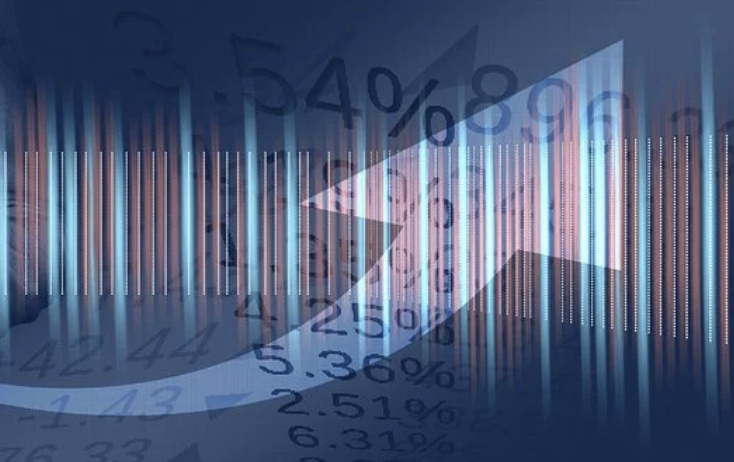
Drake Hampton
Mar 28, 2022 17:30
Unlike risk in everyday language, which is frequently linked with a negative event, risk in statistics simply refers to the likelihood (usually statistical probability) that an event will occur, whether good or bad.
These are the connections between various terminology used to describe risk, risk changes, and statistically significant differences.
In this post, we'll take a quick look at the various forms of risk that you should be aware of.

Any threat that an event or action will have a negative impact on the business and its objectives is referred to as a risk. Risk is defined as the chance of an event occurring as well as the consequences of that event occurring. This offers us a straightforward formula for calculating risk in every situation.
Risk = Probability x Severity
Do you like to take chances? When you're an independent stock trader, the risk/reward calculation is one of the few safeguards you have. The calculation to calculate risk vs. reward is straightforward. Simply divide your net profit (the reward) by the maximum risk price.
Unfortunately, when retail investors try to invest their own money, they may end up losing a lot of money. There are several reasons for this, one of which stems from individual investors' failure to handle risk. Risk/reward is a well-known word in the financial world, but what exactly does it imply?
Divide your net profit (the reward) by the price of your maximum risk to calculate risk vs. reward.
Pick a stock, calculate the risk/reward, and set the upside and downside targets based on the current price.
If the risk/reward ratio is below your threshold, increase your downside objective to try to reach an acceptable ratio; if you can't, start with a different investment.
Investing money in the markets has a significant level of risk, and if you're going to accept that risk, you should be compensated for it. It might not be worth the risk if someone you hardly trust asks for a $50 loan and promises to reimburse you $60 in two weeks, but what if they promised to pay you $100? The risk of losing $50 in exchange for a chance to win $100 may be attractive.
That's a risk/reward ratio of 2:1, which piques the curiosity of many professional investors because it allows them to double their money. In the same way, if the person offered you $150, the ratio became 3:1.
Let's take a look at this from the perspective of the stock market. Assume you've done your homework and discovered a stock you like. You see that the price of XYZ stock has dropped to $25 from a recent high of $29.
You feel that if you buy now, XYZ will rise to $29 in the not-too-distant future, allowing you to profit. You have $500 to invest and decide to purchase 20 shares. You've done your homework, but do you know what your risk/reward ratio is? You probably don't, if you're like most individual investors.
The following four categories can be used to categorize risks:
Internal: Cash flow and liquidity
Interest rates (external) Credit for foreign exchange
Internal: Research and development, integration of mergers and acquisitions
External factors include intellectual capital, competition, customer shifts, industry shifts, and customer demand.
Accounting controls, IT systems, recruitment, and supply chain management are all examples of internal controls.
External factors include regulations, culture, and the composition of the board of directors.
Employees, properties, public access, products and services are all internal.
Contracts, natural events, suppliers, and the environment are examples of external factors.
Risk ratio, also known as relative risk, is a metric that is used to assess risk-taking behavior in one group and compare the outcomes to the results of a similar risk-taking behavior in another group.
This can be defined as a ratio of the risk probabilities in one group to the risk occurrence probability in another group. It is frequently used to present the results of various organizations. A relative risk is another phrase for this.
The risk ratio is calculated by comparing the incidence or risk of an event occurring in one group (experimental group) to the incidence or risk of an event occurring in another group (control group).
This is done by looking at two variables. One of the variables will be used to determine the frequency of an event (exposed vs. unexposed), while the other will be used to compare the two groups (Group A vs. Group B).
The analyst must then divide the incidence of an exposed event in group A, the experimental group, by the incidence of an unexposed event in group B, the control group. The percentages are used to calculate this.
When the numbers are identical to 0, it signifies that there was not even a single case in group A where the incidence occurred, whereas the "x" number of cases in group B where the incidence occurred. When the values are equal to 1, the findings are considered neutral. To put it another way, the chance of an event occurring in one group must be the same as the probability of an event occurring in various groups.
This is just as vital as the calculation. The risk ratio might have a value of zero, one, or a value greater or less than one. When the findings are greater than zero, it simply means that none of the incidences in the experimental group or group A had the probability of occurring, whereas 'x' likelihood of incidences in the control group or group B had the probability of occurring.
When the outcomes are equal to one, the experiment is considered neutral, or the incidences in the experimental group are the same as in the control group.
The risk in the exposed group is greater than the risk in the unexposed group when the result is greater than one. In the same way, if the result is less than one, it means that the risk in the exposed group is lower than the risk in the unexposed group.
A risk score is a numerical value (score) that shows the severity of a risk as a result of certain conditions. Project risk scores are typically computed by multiplying likelihood and impact, though additional considerations, such as weighting, may be considered. Risk scores are often derived using components based on likelihood and impact ranges for qualitative risk assessment. Risk probability and effect inputs in quantitative risk assessments might be discrete numbers or statistical distributions.
We must provide a value to each of the likelihood and impact levels in order to calculate risk score (e.g. 1, 2, 3, 4, 5). For each label, we now have the following values in our matrix:

The probability of a specific event occurring during the course of a project is known as risk probability. Probability, for example, can be divided into five levels: Very Low, Low, Medium, High, and Very High. The issue with these categories is that they can be quite vague, with varying meanings depending on who you ask. Some ways try to help by using categories like Rare, Unlikely, Possible, Probable, and Certain; nevertheless, we still need to define what these terms represent.
To clarify this, we can add more information to each probability group so that everyone understands what it means, for example, what does Rare or Very Low Probability mean? As a result, a probability definition for each group is recommended.
Assessing impacts, like probability matrixes, can be difficult if there is no agreed-upon definition of what each impact level entails. Furthermore, risk implications can have an impact on multiple project objectives, including cost, schedule, safety, quality, and others. These are known as risk categories, and they can be evaluated independently.
Remember to divide your net profit (the reward) by the price of your maximum risk to calculate risk/reward. Using the XYZ example above, if your stock rose to $29 per share, you would earn $4 per share on each of your 20 shares, totaling $80. You paid $500 for it, so reduce 80 by 500 for a result of 0.16.
That indicates the risk/reward ratio for this strategy is 0.16:1. With such a low risk/reward ratio, most expert investors will pass on the idea, therefore this is a bad idea.
Follow these procedures to incorporate risk/reward estimates into your research:
Conduct thorough study before selecting a stock.
Based on the present price, determine the upside and downside targets.
calculate the risk/reward ratio.
If it's below your threshold, increase your downside objective to try to attain a ratio that's acceptable.
If you're unable to achieve an acceptable ratio, try an alternative investment strategy.
You'll immediately discover that finding effective investment or trade ideas becomes tough once you start factoring risk/reward. Every day, the pros go through hundreds of charts in search of ideas that meet their risk/reward profile. Don't be afraid to try it. You have a better chance of producing money if you are careful.
Unless you're a novice stock investor, you'd never let that $500 go completely to nothing. It's not the entire $500 that you're at risk of losing.
A stop-loss order, or a price on the downside, is used by every successful investor to limit their risk. If you set a sell limit price of $29 as the upside, you might set a maximum downside price of $20. You sell your stop-loss order when it reaches $20 and move on to the next chance.
We can now tweak our calculations a little because we restricted our downside. Your new profit remains at $80, but your risk has been reduced to $100 ($5 maximum loss multiplied by the 20 shares you own), or 80/100 = 0.8:1. Even so, this isn't great.
What if we increased our stop-loss price to $23, resulting in a total loss of only $2 per share or $40? Keep in mind that 80/40 is a 2:1 ratio, which is okay. Some investors will not invest in anything unless the investment is at least 4:1, while most people believe 2:1 to be the minimum. Of course, you must determine for yourself what ratio is acceptable to you.
We didn't adjust the top figure to reach the risk/reward profile of 2:1. Technical analysis and fundamental investigation were used to come to the conclusion that the maximum upside was $29 in your research. If we modify the top number in order to attain a reasonable risk/reward ratio, we are now depending on hope rather than solid data.
What more should we know about the risk/reward ratio before deciding whether our XYZ trade is a smart idea from a risk standpoint? First, risk/reward is fully objective, despite the fact that behavioral economics plays a role in most investment decisions. It's a calculation problem, and numbers don't lie.
Second, each person has their own risk tolerance. Someone who enjoys bungee jumping can suffer a heart attack simply thinking about it.
Then there's the fact that risk/reward provides no indication of probability. What if you used your $500 to buy a lottery ticket? From a risk/reward standpoint, risking $500 to make millions is a far better investment than investing in the stock market, but it is a considerably worse decision in terms of likelihood.
As you continue to analyze fresh information while owning a stock, the upside number is likely to alter. Don't be scared to exit a transaction if the risk/reward ratio turns negative. Never put yourself in a position where the risk/reward ratio isn't favorable to you.
Calculating risk scores from quantitative risk analysis, such as schedule risk analysis, integrated cost and schedule risk analysis, and others, is more difficult and time-consuming. The complexity stems from the fact that the analysis' inputs aren't only ranges or labels of ranges, but can be expressed in a variety of ways:
Percentages that are discrete (e.g. 25 percent probability that a risk will occur)
A 25% delay in a task is a relative value.
Fixed values: a 15-day task acceleration
Cost consequences using a Beta statistical distribution with a Low of $25,000, a Most Likely of $35,000, and a High of $50,000.
Actions that restart, halt, or cancel activities are examples of impacts.
The scheduling precedent network, task cruciality, and critical path must also be taken into account when calculating risk ratings. For example, suppose you have a high-probability, high-impact risk that is assigned to a task that isn't on a critical or near-critical path. Despite the fact that the risk may have a significant influence on the individual task(s) and its successors, it may have little or no impact on the overall project completion time. We can show from a sensitivity analysis that the duration of the activity with the high risk and the project finish time have a very low association coefficient.
The method for computing the quantitative risk score is as follows:
Record the impact of risk on project parameters during each iteration of simulation. Risk A, for example, occurs and results in a three-day delay and a $20,000 cost increase.
Calculate the correlation between schedule and cost impacts for each risk, as well as Project Cost, Finish Time, and Duration, among other factors.
The correlation coefficient should be normalized.
Calculate the likelihood based on how many times the risk happened in the simulation. Risks can have several probabilities per assignment as well as varying probability for different activities, therefore this might be difficult.
Each risk category's risk score may now be computed by multiplying the calculated probability by the normalized correlation coefficient.
Risk score for each category multiplied by a weight that shows the proportional relevance of the category for hazards that affect several categories. If you have cost and schedule categories, and schedule is 2x as significant as cost, you'll receive importance coefficients of.667 for schedule and.333 for Cost.
The method you employ for analyzing your projects can have a significant impact on how your risks are appraised. Make sure you understand how risks will be evaluated and that you have a set of standard principles that explain how project probability and impact are evaluated, as well as the technique used to calculate risk ratings.
Every savvy investor understands that hoping for the best is a lost strategy. It is always preferable to be more cautious with your risk than to be more aggressive with your reward. Risk/reward is always calculated cautiously yet realistically.

Mar 22, 2022 17:22

Mar 28, 2022 17:42